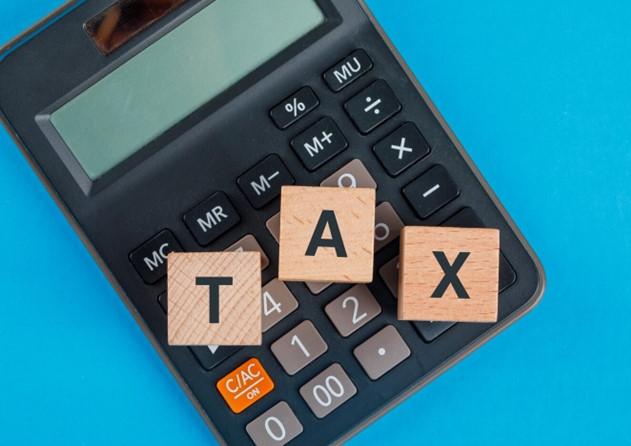April's Monthly Tax Briefing covers recent developments in tax legislation, including:
Law 5100/2024 Introduces Pillar II Global Anti-Base Erosion Rules (GloBE) of OECD into Greek Tax Legislation
A. General Framework
B. Computation of Effective Tax Rate
C. Reporting Obligations
D. Application Dates and Deadlines
A. General Framework
1. By way of Law 5100/2024 (the Law) Greece transposed into domestic legislation EU Directive 2022/2523 on ensuring a global minimum level of taxation for multinational enterprise groups and large-scale domestic groups in the European Union (the Directive).
2. The Directive introduced into EU legislation the OECD Pillar II Global Anti-Base Erosion Rules (GloBE) in the context of the OECD Base Erosion and Profit Shifting Project (BEPS).
3. In a continued effort to put an end to tax practices of MNEs that allow them to shift profits to jurisdictions where they are subject to no or very low taxation, the OECD has further developed a set of international tax rules to ensure that MNEs pay a fair share of tax wherever they operate. This major reform aims to put a floor on competition over corporate income tax rates through the establishment of a global minimum level of taxation. By removing a substantial part of the advantages of shifting profits to jurisdictions with no or very low taxation, the global minimum tax reform will level the playing field for businesses worldwide and allow jurisdictions to better protect their tax bases.
4. That framework creates a system of two interlocked rules, together also referred to as the ’GloBE rules’, through which an additional amount of tax (a ’top-up tax’) collected each time that the effective tax rate of an MNE in a given jurisdiction is below 15%. In such cases, the jurisdiction should be considered to be low-taxed. Those two interlocked rules are called the Income Inclusion Rule (IIR) and the Undertaxed Profit Rule (UTPR). Under this system, the parent entity of an MNE located in a Member State is obliged to apply the IIR to its share of top-up tax relating to any entity of the group that is low-taxed, whether that entity is located within or outside the Union. The UTPR should act as a backstop to the IIR, through a reallocation of any residual amount of top-up tax in cases where the entire amount of top-up tax relating to low-taxed entities could not be collected by parent entities through the application of the IIR.
5. The Law applies to entities located in Greece that are members of MNE groups or large-scale domestic groups that meet the annual threshold of at least €750m of consolidated revenue. This threshold is consistent with the threshold of existing international tax rules, such as the country-by-country reporting rules set out in Council Directive 2011/16/EU, introduced by Council Directive (EU) 2016/881. Entities within the scope of the Law are referred to as ’constituent entities’. Governmental entities, international organisations, pension funds and non-profit organisations, including organisations for purposes such as public health and specific Investment funds and real estate investment vehicles, are excluded from the scope of the Law.
6. The Law introduces the IIR and UTPR Rules to increase the effective tax rate of the targeted Groups to the minimum rate of 15% by way of imposition of the top-up tax. Greece has also elected to introduce a domestic top-up tax. Constituent entities of an MNE group that are located in Greece must pay the top-up tax to Greece. This should ensure that the minimum effective taxation of the qualifying income or loss of the constituent entities is computed in accordance with the Directive.
7. The Law also includes safe harbours provided for in the GloBE Implementation Framework to ensure that, at the election of the filing constituent entity, the top-up tax due by a group in a jurisdiction is deemed to be zero for a fiscal year, if the effective level of taxation of the constituent entities located in that jurisdiction fulfils the conditions of a qualifying international agreement on safe harbours.
8. The safe harbours adopted by the Law are the:
a. transitional CbCR Safe Harbour;
b. transitional UTPR Safe Harbour; and
c. Domestic Minimum Top-Up Tax Safe Harbour.
B. Computation of Effective Tax Rate
1. The effective tax rate of an MNE group or of a large-scale domestic group is computed for each fiscal year and for each jurisdiction, provided that there is net qualifying income in the jurisdiction, in accordance with the following formula:
| Effective tax rate = | adjusted covered taxes of the constituent entities in the jurisdiction net qualifying income of the constituent entities in the jurisdiction |
where the adjusted covered taxes of the constituent entities are the sum of the adjusted covered taxes of all the constituent entities.
2. The net qualifying income or loss of the constituent entities in the jurisdiction for a fiscal year is determined in accordance with the following formula:
| Top-up tax percentage = minimum tax rate – effective tax rate |
3. The jurisdictional top-up tax for a fiscal year is the positive amount, if any, computed in accordance with the following formula:
| Jurisdictional top-up = (top-up tax percentage x excess profit) + additional top-up tax – domestic top-up tax |
4. The excess profit for the jurisdiction is the positive amount, if any, computed in accordance with the following formula:
| Excess profit = net qualifying income – substance-based income exclusion |
5. The top-up tax of a constituent Greek entity for the current fiscal year is computed in accordance with the following formula:
| Top-up tax of a constituent entity = jurisdictional top-up tax | |
| x | qualifying income of the constituent entity aggregate qualifying income of all constituent entities |
6. If the jurisdictional top-up tax results from a re-computation and there is no net qualifying income in the jurisdiction for the fiscal year, the top-up tax is allocated to each constituent entity using a specific formula, based on the qualifying income of the constituent entities in the fiscal years for which the re-computations are performed.
C. Reporting Obligations
1. A constituent entity located in Greece must file a top-up tax information return with the Greek Tax Administration.
2. Constituent entities are not obliged to file a top-up tax information return with their tax administration if such return has been filed by:
a. the ultimate parent entity located in a jurisdiction that has, for the reporting fiscal year, a qualifying competent authority agreement in effect with the Member State in which the constituent entity is located; or
b. the designated filing entity located in a jurisdiction that has, for the reporting fiscal year, a qualifying competent authority agreement in effect with the Member State in which the constituent entity is located.
D. Application Dates and Deadlines
1. The IIR will apply to fiscal years beginning on or after 31 December 2023.
2. The UTPR will apply to fiscal years beginning on or after 31 December 2024.
3. The top-up tax information return and related notifications must be filed no later than 15 months after the last day of the reporting fiscal year or within 18 months with regard to the first year in which an MNE Group or a large-scale domestic group falls within the scope of the Law.
4. The constituent legal entity’s top-up tax return should be filed up to the last business day of the month following the month of filing of the top-up tax information return.
Download our April 2024 Monthly Tax Briefing.




